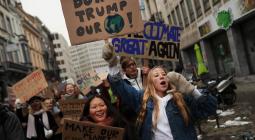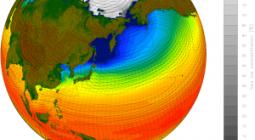Τα 3 θέματα για την κλιματική αλλαγή που δυσκολευόμαστε να αντιληφθούμε.
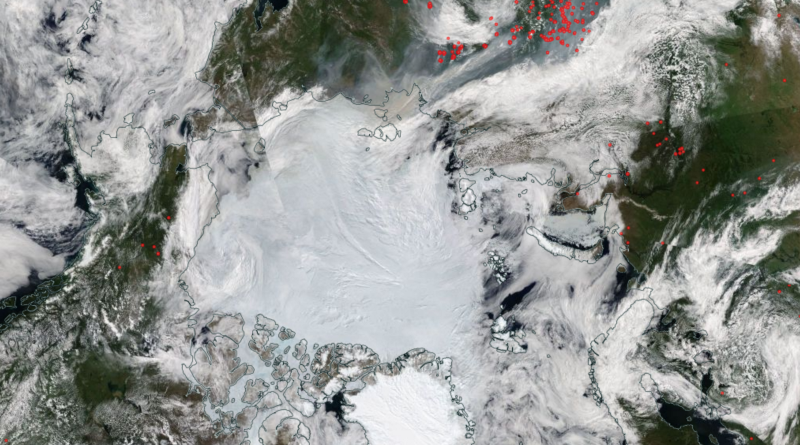
Three Things We Don’t Want To Understand About Climate Change
Thinking about climate change is not something that comes naturally to humans — or ‘consumers’ as we have called ourselves for decades. It is not only emotionally unpleasant but mentally extremely challenging.
I argue that most of us do not grasp how immediate this situation has become, how fast it is progressing and what the scale of change needed is to reach the stabilization targets of the Paris Agreement.
I also argue that after individuals, nations, and corporations understand the urgency and the rate, they should be honest about what the scale of action needed is to avoid the collapse of the biosphere and thus civilization.
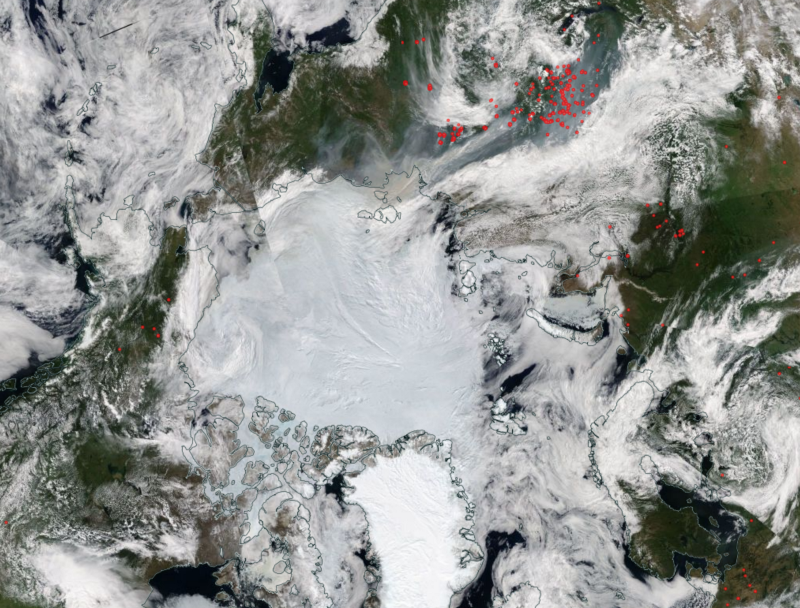
Human society is deeply and permanently coupled to the Earth system. In the geological epoch, we have entered called the Anthropocene, that system is undergoing immediate, massive disruption. The previous period of Holocene gave us agriculture and settled living arrangements.
Since the onset of industrial production at an accelerating rate and scale, human society has had a deep and far-ranging influence on natural processes which it depends on. Climate change is only one of the manifestations — there are multiple large-scale indicators of our presence on this planet from erosion to nitrogen runoff, species extinction to uncontrolled population growth.
There is no waste in nature. The human cultural and economic systems produce waste, which harms and destabilizes the natural world which we ultimately depend on as a civilization.
1. Urgency
The first misunderstanding about climate change is related to how we perceive its impacts in time. It is not (only) a future issue, not a polar bear issue and indeed not a matter which only affects a few remote parts of the world.
The situation has become dangerous during the last four years of 2014, 2015, 2016, 2017 and now continuing into 2018. Certain parts of the world see the less immediate risks, but systematic changes affect us all.
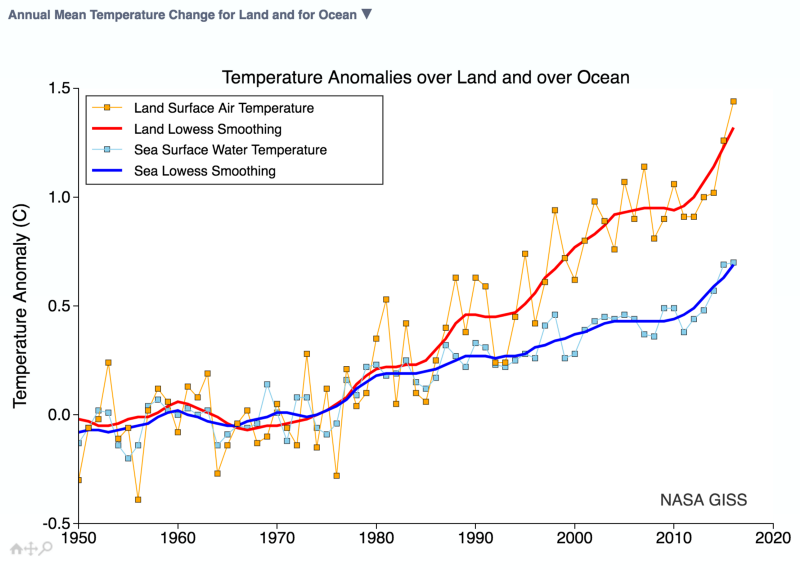
How is it possible that the Earth system has taken up our presence on the surface so lightly even when we have changed the chemistry of the atmosphere and the ocean with our carbon pollution?
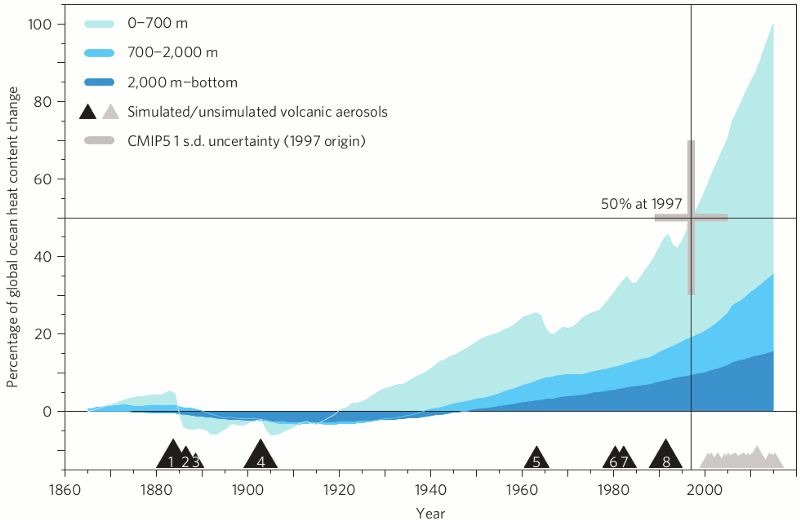
Most of the energy (heat) human carbon pollution creates ends up warming the world ocean, some 93% of our addiction to burning ends up there. Every passing year we pump over 40 gigatons (40,000 million tonnes) of carbon dioxide into the Earth system, where roughly half of it is absorbed by sink capabilities of the oceans and the land biosphere. The rest of it ends up in the atmosphere with all the other gases we put up in addition to aerosols and certain novel entities that have never occurred in the natural state of the Earth system.
The fact that increasing greenhouse gas loading from human sources in the carbon cycle is cumulative makes this an extremely vicious political, economic and social problem. The increment which ends up in the atmosphere can only be drawn down by the natural biogeochemical system on time scales extending to tens or hundreds of thousands of years.
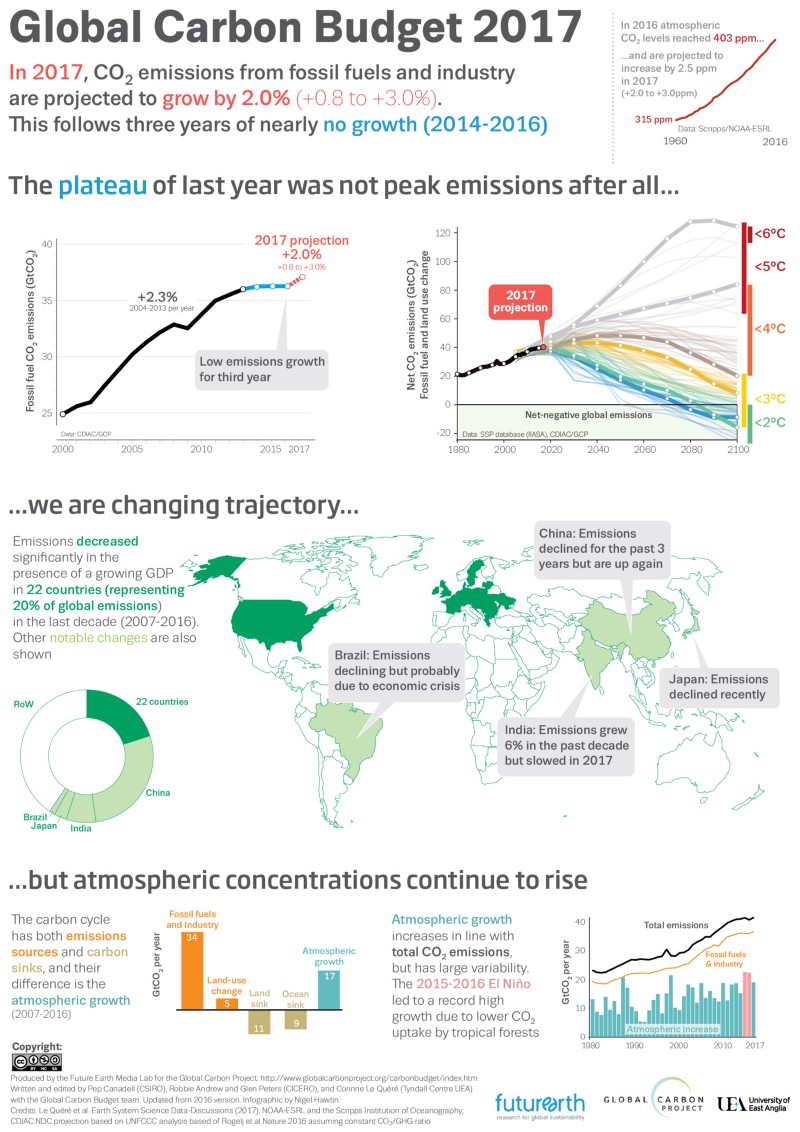
One component of urgency is that when surface temperatures increase after being buffered by the ocean — theoretically without the world ocean we would have average temperatures tens of degrees hotter on the surface of continents from the increased atmospheric forcing — they can do so in a non-linear fashion producing extreme weather and permanent changes.
Climate change creates immediate impacts on human and natural systems. Single exceptional extreme weather events are not caused by climate change, but happen in a distinctively new climate. The hotter atmosphere holds more moisture which increases precipitation. Extreme heatwaves become more common than before. Ice in all its forms melts.
In recent years multiple large scale disasters were occuring in various parts of the planet. Global fire situation was exceptional in Siberia, Greenland, Canada and other parts of North America. Tundra burns, forests burn, people suffer. Europe was under severe heat waves, and there were mass casualties from forest fires in Portugal.
There was extreme flooding in South Asia, impacting multiple cities and the country of Bangladesh of which one third was under water. Hurricane Harvey hit South Texas at Category 4 strength and produced record precipitation totals for many locations, including but not limited to the City of Houston.
After the hurricane season was over, hundreds of billions of damages were recorded and thousands of lives were lost in the aftermath. As the global climate destabilizes, tens of millions suffer from these impacts — right now.
2. Rate and Scale of Change
The Arctic, an area located on the top of the planet from 66°N north, is a prime example of systematic exponential change. It is warming at least twice as fast as the rest of the earth. There is less inertia in the Arctic than there is in the general climate system.
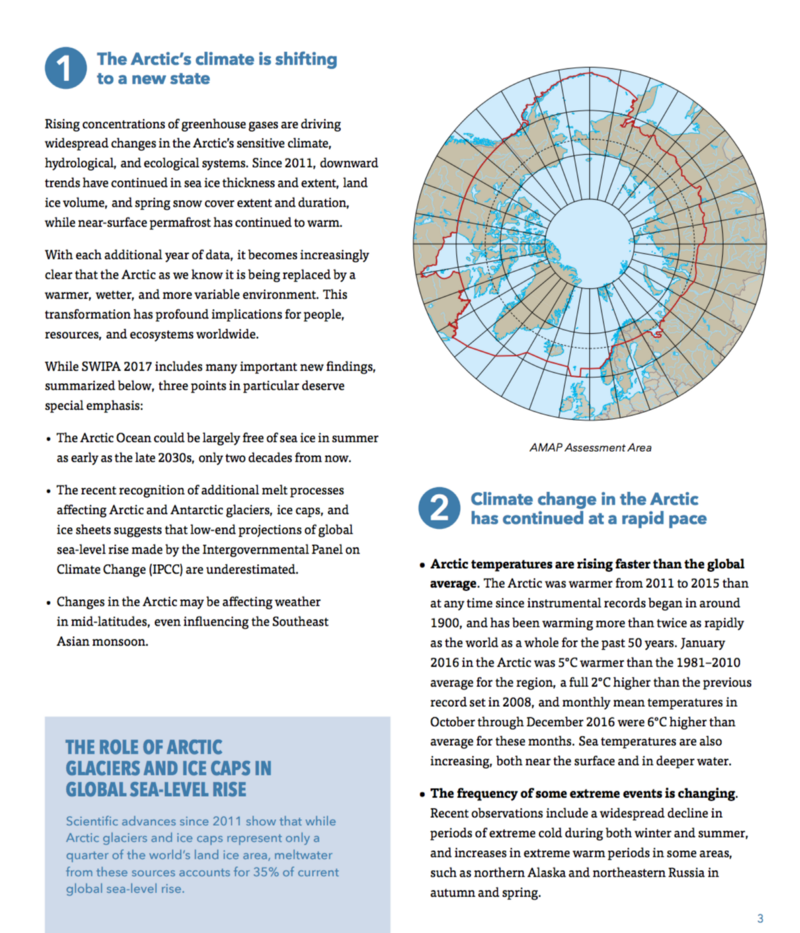
Even the general climate system is being pushed in ways which have no previous analog in natural climate changes going back tens of millions of years discounting asteroid impacts. It is about the rate of carbon dioxide, and other greenhouse gases added. There have been periods in the deep geological past of Earth when greenhouse gas concentrations have been much, much higher than they are today but increases have never occured this rapidly.
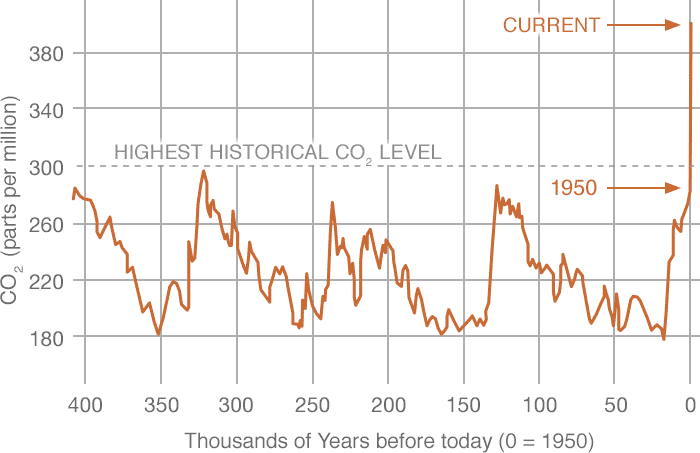
Earth is a fluid, non-linear system capable of abrupt and total change. Earth system has been in a hothouse state and for a while was mostly covered by ice.
At current pathways, we are going to lose huge portions of both continental polar ice sheets, possibly in their entirety. The disintegration will take centuries to happen but when we commit, the resulting sea level rise will be accelerating and permanent. Permafrost is thawing, which is a threat both to the carbon cycle and our settled living arrangements in the Arctic.
When climate scientists project future climate change up to and beyond 2050 and 2100, they refer to scenarios. They are used in policy making to set stabilisation targets. The result of global climate change mitigation policies will set the climate system into a new equilibrium state during the following centuries. After total decarbonization, the Earth system will run through some of the slower feedbacks initialized by the human-caused increase in ocean and surface air temperatures.
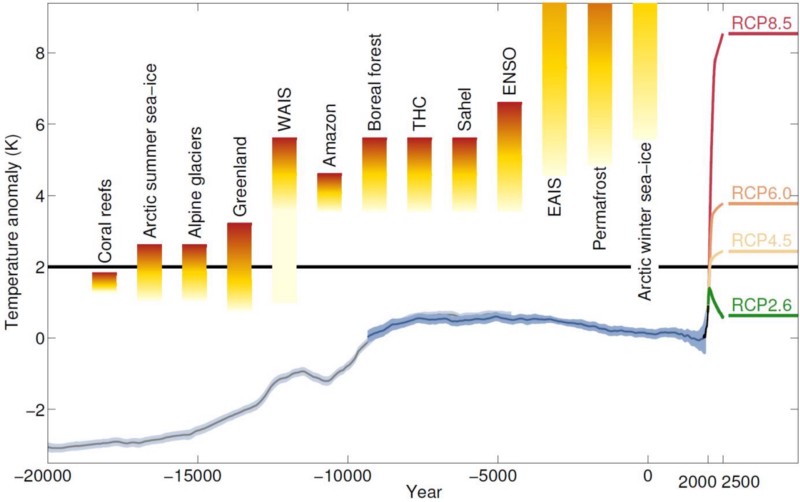
What is worrying is that humanity is currently putting in place an atmospheric forcing comparable to something between the RCP4.5 and 8.5 (watts per square meter) outcomes. The choice between the Paris Agreement ‘well below 2°C’ framing and higher, 3–4°C level of warming is the choice of having a civilisation with global governance capability or losing it.
At any pathway we choose to follow, for the climate to stabilize at a higher level of change, emissions need to be zero. If new carbon pollution enters the climate system, temperatures will go up. This constraint applies to limited 2.5°C emissions budgets as well as 3°C budgets.
3. Stabilization
What can be done? Multiple actions are underway. Our energy system is changing with global energy demand growth continuing its increase due to the industrialization of developing nations, increasing consumption and population growth but, newly added electricity capacity in the form of solar and wind power only appear to offset some of the combined growth. Electricity is just a part of the energy services we use.
The massive use of fossil fuels is the primary driver of human-caused climate change. The fraction of low-carbon energy is the same now that it was a few decades ago. Fossil fuels dominate our energy system at >80% share in total final energy consumption. Deforestation and other land-use change also contribute significantly, but our profligate use of fossil energy commits us to possibly catastrophic breakdowns of the climate system.
For a reasonable chance of keeping warming under 2℃, we can emit a further865 billion tonnes of carbon dioxide (CO2). The climate commitments to reduce greenhouse gas emissions to 2030 are the first step, but recent analyses show they are not enough (Canadell and Smith, 2017 http://bit.ly/2jRNjIK).
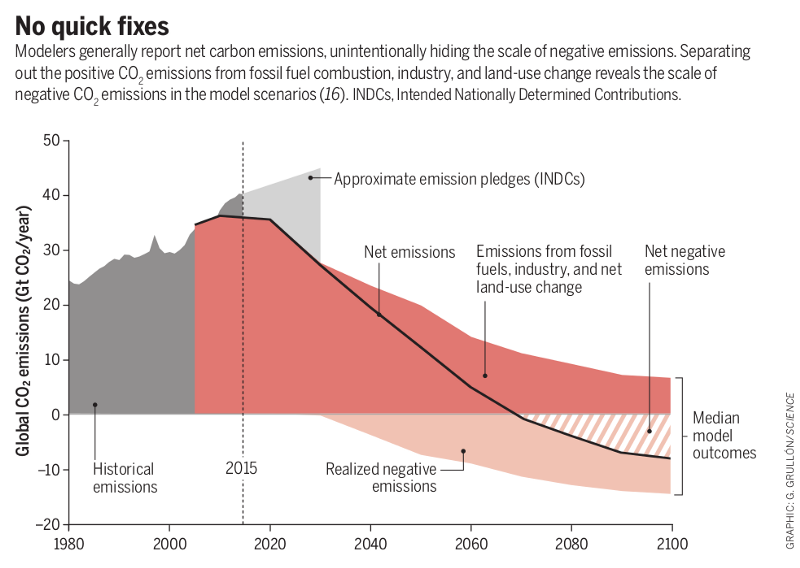
It is becoming clear that whether the physical budget is at 600 or 800 gigatonnes, the industrial civilization will overshoot it. Overshoot means that since emissions are unlikely to fall rapidly close to zero, the physical amount of carbon in the atmosphere will be higher than that which would lead to an eventual 2°C temperature increase of the oceans and land surfaces.
Recent policy, consumption pattern and technical analysis suggest a much higher eventual temperature increase of 3–4°C.
Economic modeling has the magical ability to increase the size of the carbon budgets by creating a massive drawdown in the future. When we burn carbon, it combines with oxygen more than tripling its mass. Imagine the size of the drawdown systems needed to handle 10 to 20 gigatonnes (10,000 to 20,000 million tonnes) of CO2. That is in the order of current oceans and the land biosphere in the carbon cycle.
The carbon budget framing might seem like a radical socio-political construct, but it is, in fact, the best depiction of the physical reality of climate change. Cumulative emissions dictate the mitigation outcome — there is entirely no doubt about this as the Intergovernmental Panel on Climate Change has shown.
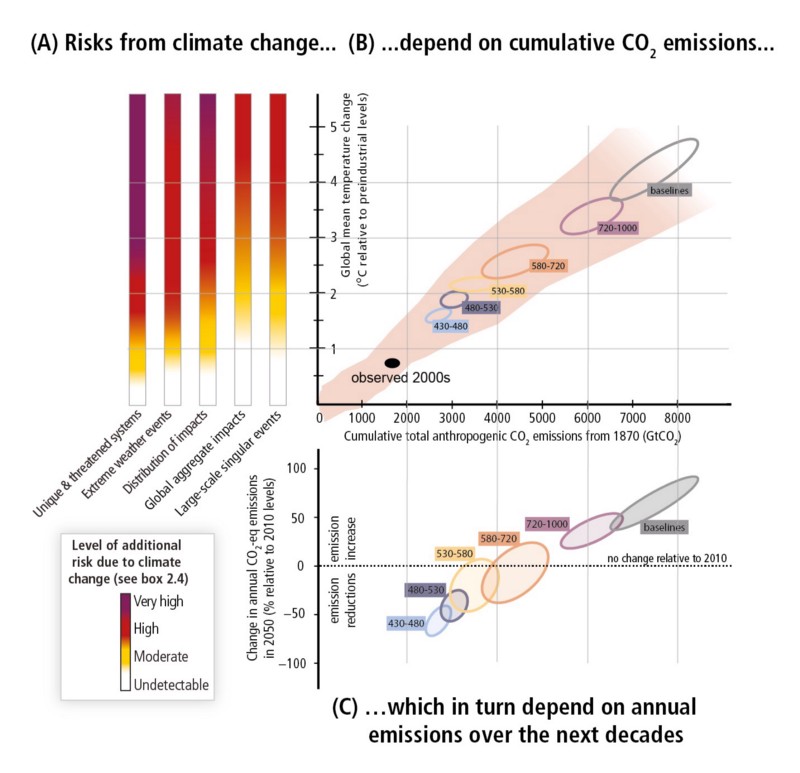
It is indeed the fact that many energy services of fossil fuels are growing quickly that is the problem for climate stabilization. Air travel, road freight, shipping. Fast global growth. Based on a sound understanding of the physical constraints, their fossil carbon use should be declining quickly.
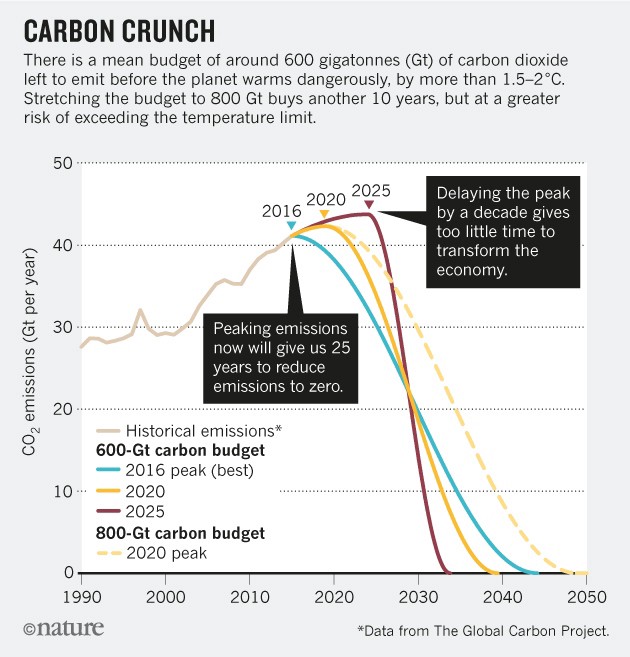
Three years to safeguard our climate (Figueres at al, 2017 http://go.nature.com/2t1gwUD).
All of this is sadly true and supremely distressing. Emissions from fossil fuels and land use change are 60% higher than they were in 1990 when scientists established most of what has been shown above with high certainty. Only the resolution of understanding has increased along with worsening climate disruption.
F/ Honesty
Finding out the reality of this situation is a profound experience. It is a state shift in human cognition, comparable to the expansion of the internet and global connectivity, or indeed to seeing the Earth from orbit as the first astronauts did. They saw a thin atmosphere surrounding our home planet.
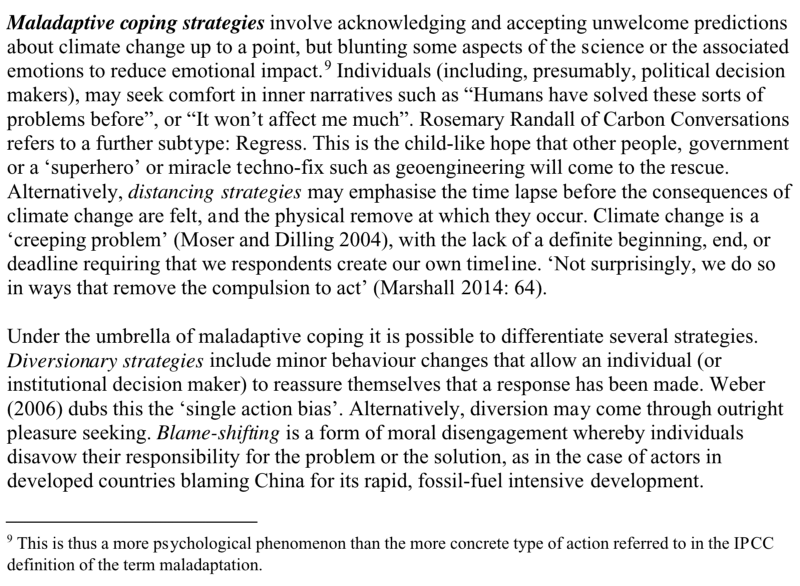
What I argue as a citizen is to stop lying to ourselves. We have to obey the ancient laws of the universe. No amount of economic growth, green shift, denial or activism can negotiate with physical forces of the Earth system which is billions of years old.
Our energy production will never be able to transform fast enough to meet the Paris Agreement stabilisation target without mad assumptions of building a carbon drawdown device on this planet three times the size of the current oil industry, capable of sequestering greenhouse gases from ambient air on the order of what the natural sinks like the world ocean and the land biosphere are currently doing.
According to Oxfam, 10% of us wealthy Westerners generate almost as much greenhouse gas emissions from our lifestyle as the rest of the people on this planet. Finnish household consumption added to territorial emissions at >10 tCO2 equivalent per capita will breach the global carbon budget for lower stabilization targets within a decade.
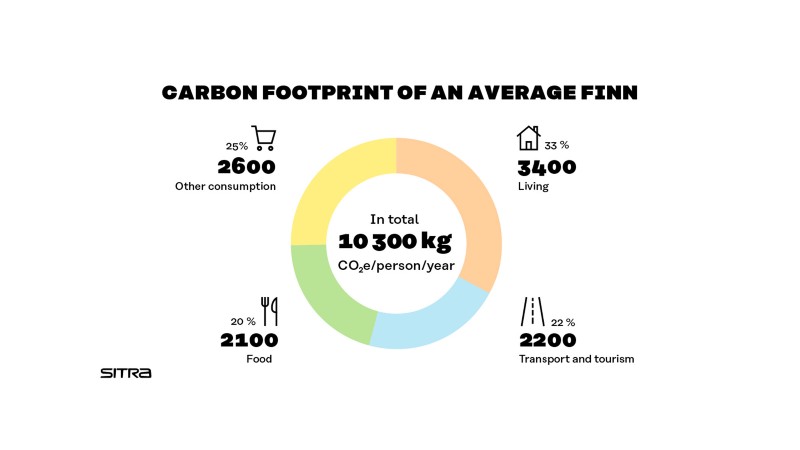
Taking climate action is a pragmatic, but also a moral issue. Nobody can escape it, no matter how much one tries — economic off-setting does not deliver absolute carbon cuts before all global emissions are declining. Polluting now is the destruction of the present and the future, in line with past carbon emissions by people like us in the global north.
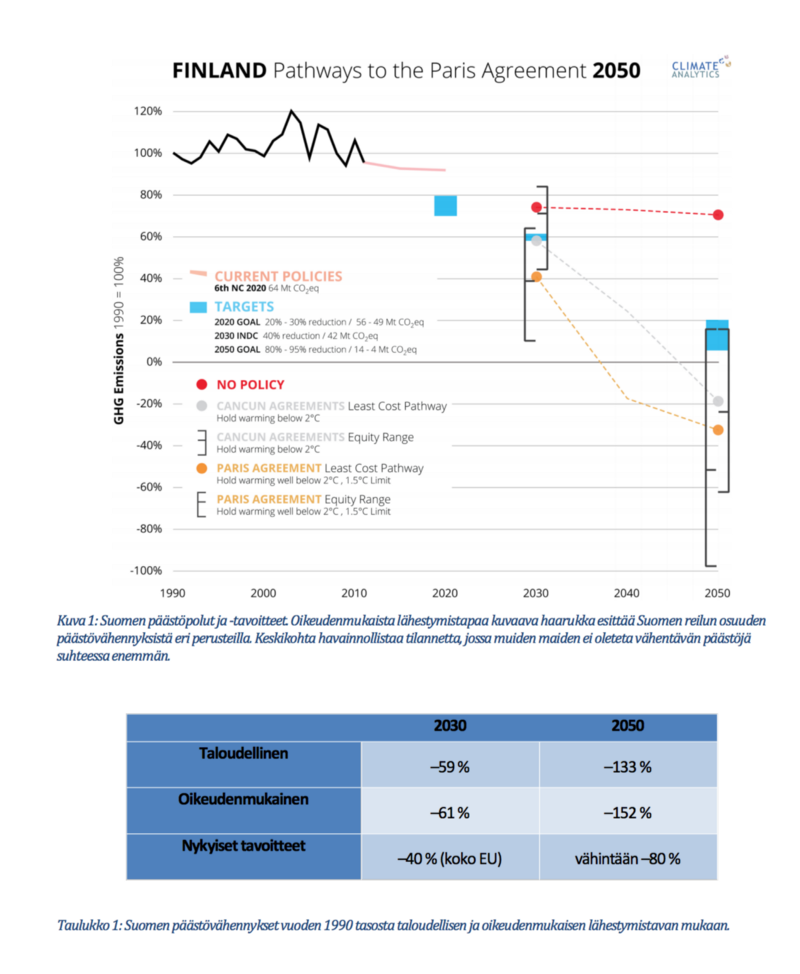
We have to transform our diets, mobility systems, energy production, and conspicuous consumption as soon as possible to limit risks of profound magnitude. The first decade from now on should cut all of our carbon pollutions in half.
The next decade should halve the portion left and so on. We have to put in policies which enhance natural carbon sequestration and research artificial new sinks.
Taking real personal climate action was an obligation to protect future generations, poor people and animals some decades ago. As we have taken no absolute responsibility during that time, the situation is now a risk also for ourselves. Continuing this vanity-based polluting is a threat to huge amounts of humans living in the present moment in our own societies, on this finite planet in the vast universe.
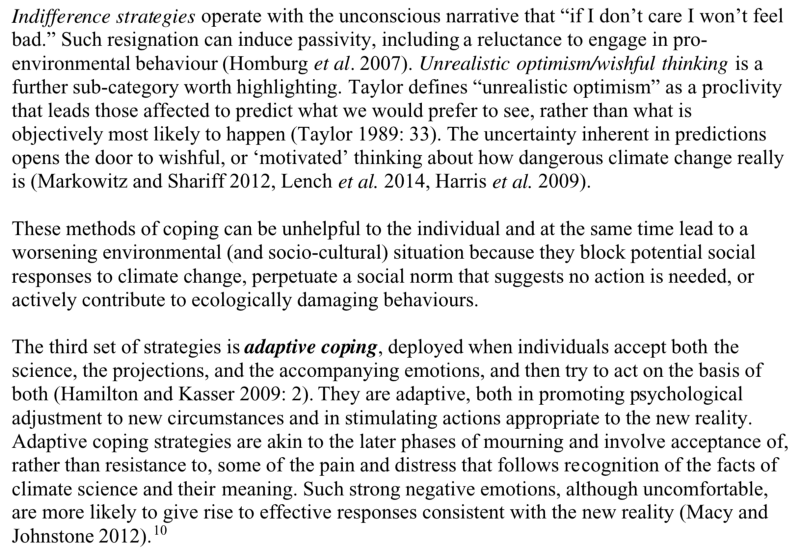
We have to push through this mentally, keeping our focus on what we can do with resolute purpose against nearly impossible odds. We have to be honest with ourselves, respectful of others and lead by example in all our actions.
Everybody can enter this space with relatively little sacrifice, as hundreds of thousands of people in Finland have done by engaging with Sitra’s Lifestyle Test and 100 smart ways framework. We must build resilient and prosperousCarbon-Neutral Circular Economies while also implementing the United Nations Sustainable Development Goals.
Being honest about climate change might be uncomfortable in the beginning, but the truth is, after all, one of the most precious things this world has to offer. On the path of Climate Action, taken together in community, one finds heartful and caring people which is the perfect antidote to climate anxiety and depression.
I invite you to take action and always to remember three things: how immediate the situation has become, what kind of rates it is progressing at and what the scale of change needed is to prevent catastrophic risks to people and nature.
30 August 2017
Aarne Granlund


